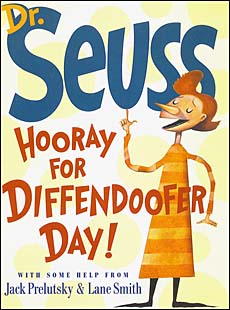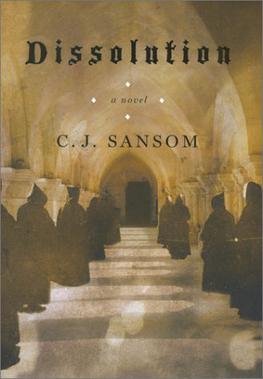
Kenneth Oppel is a Canadian children's writer.

Firewing is a children's book written by the Canadian author, Kenneth Oppel. It is the third book in the series which also consists of: Silverwing, Sunwing and the prequel, Darkwing.
Tracey Porter is an American children's book author. She writes novels targeted towards children aged 9 to 12. Her novel Billy Creekmore was named in Oprah.com's Kids' Reading List, compiled by the American Library Association. She is a middle-school teacher at Crossroads School in Santa Monica, California.

Airborn is a 2004 young adult novel by Kenneth Oppel. The novel is set in an alternate history where the airplane has not been invented, and instead, airships are the primary form of air transportation. Additionally, the world contains fictional animal species such as flying creatures that live their entire lives in the sky. The book takes place aboard a transoceanic luxury passenger airship, the Aurora, and is told from the perspective of its cabin boy, Matt Cruse.

The Winter Room is a Newbery Honor-winning short novel by Gary Paulsen. It is a realistic fiction story about logging and farming, narrated in the first person to two boys by their Norwegian uncle in the "winter room" of a farm in northern Minnesota, United States. Like many of his works, it evokes a harsh rural environment using vivid imagery, and has elements of a coming of age tale.

Hooray for Diffendoofer Day! is a children's book credited to Dr. Seuss "with some help from Jack Prelutsky and Lane Smith". The book is based on verses and sketches created by Seuss before his death in 1991, and was expanded to book length and completed by poet Prelutsky and illustrator Smith for publication in 1998.

Skybreaker, sequel to Airborn, is a young adult fantasy novel written by Canadian author Kenneth Oppel. It continues the adventures of young airship student Matt Cruse, and Kate de Vries, a budding scientist.

Renegade's Magic is a book by Robin Hobb, the third in her Soldier Son Trilogy. The book follows Nevare, protagonist from the previous two novels, Forest Mage and Shaman's Crossing. Forced to hang for his alleged nefarious crimes, Nevare finally embraces the magic within himself and escapes. The battle between his Gernian and Speck identities is a central feature of the novel, highlighting themes such as loss of identity, and the impact of colonialism on native populations.

The October Horse is the sixth novel in Colleen McCullough's Masters of Rome series. It was first published in November 2002 by Century in UK and Simon & Schuster in USA.

Keeping You a Secret is a young adult novel by Julie Anne Peters. It was first published in hardback in 2003, and later in paperback in 2005.
Ellen Wittlinger was an American author of young adults novels, including the Printz Honor book Hard Love.

The Goose Girl is a fantasy novel by Shannon Hale based on the Brothers Grimm fairy tale of the same title, published by Bloomsbury in 2003. It is Hale's debut novel and the first in her Books of Bayern series. It follows the story of Anidori-Kiladra "Ani" Talianna Isilee, Crown Princess of Kildenree, as she travels to the neighboring kingdom of Bayern to wed their crown prince. On the journey, she is usurped by her jealous lady-in-waiting and must prove her true identity as the princess. Critical reception of the novel was mostly positive. The book won the 2003 Josette Frank Award for fiction and has been published in English, Spanish, Hungarian, Dutch, Japanese, and Vietnamese.

Dissolution (2003) is a historical mystery novel by British author C. J. Sansom. It is Sansom's first published novel, and the first in the Matthew Shardlake Series. It was dramatised by BBC Radio 4 in 2012.

A Mango-Shaped Space is a 2003 young adult novel by the American author Wendy Mass. A Mango-Shaped Space is Mass's fourth fiction novel. The book received the American Library Association Schneider Family Book Award in 2004. The novel has since been nominated for, and received, a number of other awards. The hand lettering on the cover is by Billy Kelly. The book is recommended for grades 5–8. A 7-hour long audiobook version, narrated by Danielle Ferland, has been produced.

The Forest is a historical novel by Edward Rutherfurd, published in 2000. Drawing on the success of Rutherfurd's other epic novels this went on to sell well and appeared in numbers of bestseller lists.

Graceling is a 2008 young adult fantasy novel written by American author Kristin Cashore, her literary debut.

Vicki Due Hendricks is an American author of crime fiction, erotica, and a variety of short stories.

Star Gate is a science fantasy novel by American writer Andre Norton, published by Harcourt, Brace & Company in 1958. The story is science fiction with a blend of sword and sorcery, mingling technologically advanced humans from Earth with the human natives of the far-off world of Gorth and a native culture that has achieved the development level of medieval Europe.

Weedflower is a 2006 American children's historical novel by Cynthia Kadohata, the author of the award-winning Kira-Kira. The cover photography of the first edition is by Kamil Vojnar. The story is set in the United States during World War II and told from the perspective of 12-year-old Japanese-American Sumiko. A 6.5-hour-long audiobook version of Weedflower, read by Kimberly Farr, has been published.

X: A Novel is a young adult novel by Ilyasah Shabazz and Kekla Magoon, published January 6, 2015 by Candlewick Press.


















